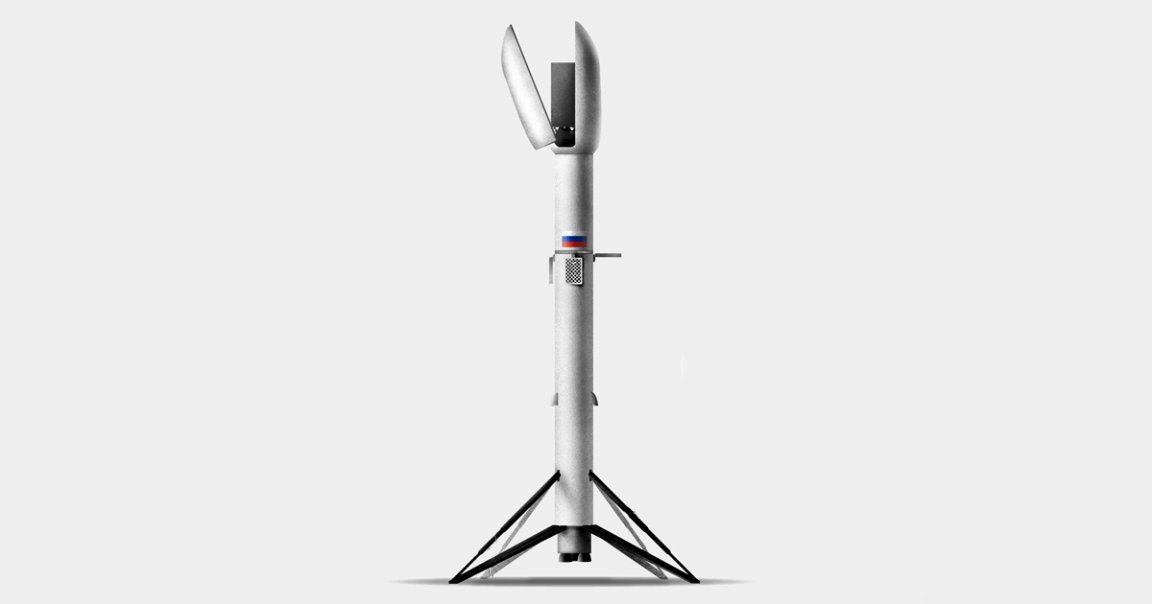
Russia’s space corporation Roscosmos unveiled plans for its reusable “Amur rocket” this week — a design, planned to be completed by 2016, that borrows heavily from SpaceX’s Falcon 9, as Ars Technica‘s senior space reporter Eric Berger pointed out in a Monday tweet.
SpaceX CEO Elon Musk quickly waded into the discourse, throwing some shade at the new design.
“It’s a step in the right direction, but they should really aim for full reusability by 2026,” Musk tweeted. “Larger rocket would also make sense for literal economies of scale. Goal should be to minimize cost per useful ton to orbit or it will at best serve a niche market.”
Both rockets feature a set of grid fins on top and landing legs at the base. The overall shape of the fairing is also very familiar.
But they do differ in other aspects: the Amur is slimmer in diameter and uses five RD-169 engines instead of the nine Merlin engines on the Falcon 9. Amur will also be designed to burn methane for fuel, while the Falcon 9 uses both liquid oxygen and rocket-grade kerosene.
Just like SpaceX’s Falcon 9 first stages, Roscosmos is planning to collect first stages on a boat out at sea — sound familiar? — to later reuse them up to ten times.
SpaceX isn’t quite at ten reuses yet, but it’s made significant progress in reusing the first stages and fairings of its Falcon 9 rockets post launch. In August, SpaceX flew the same first stage for the sixth time, and it’s planning to fly the same first stage for the tenth time some time next year. By 2026, Musk’s tweet seems to imply, it will have vastly surpassed the Amur’s planned capabilities.
Rather than focusing on making the Falcon 9 entirely reusable — unlikely at this late stage — the company is betting on its next-generation Starship, which is designed from the ground up to be fully reusable.
SpaceX is now gearing up to start launching the massive Mars-bound rocket, likely what Musk was referencing with “larger rocket,” to a height of 12 miles. The first test flight to orbit is only a few years away, according to Musk.
Starship is designed to eventually carry up to 100 tons of cargo to orbit, dwarfing the Amur rocket’s planned max payload of 10.5 tons.
SpaceX and Roscosmos have had a rocky relationship. Musk and Roscosmos chief Dmitry Rogozin haven’t been above taking pot shots at each other in the past.
Russia is hoping to start testing its rocket in 2026 — an eternity in terms of how quickly the industry has been progressing.
The space corporation is aiming at just $22 million per launch, for about 10.4 tons of cargo — a competitive price point. Developing the rocket is budgeted at just $900 million.
READ MORE: Russian space corporation unveils planned “Amur” rocket—and it looks familiar [Ars Technica]
More on Roscosmos: Russia Wants to Be the First to Shoot a Movie In Space